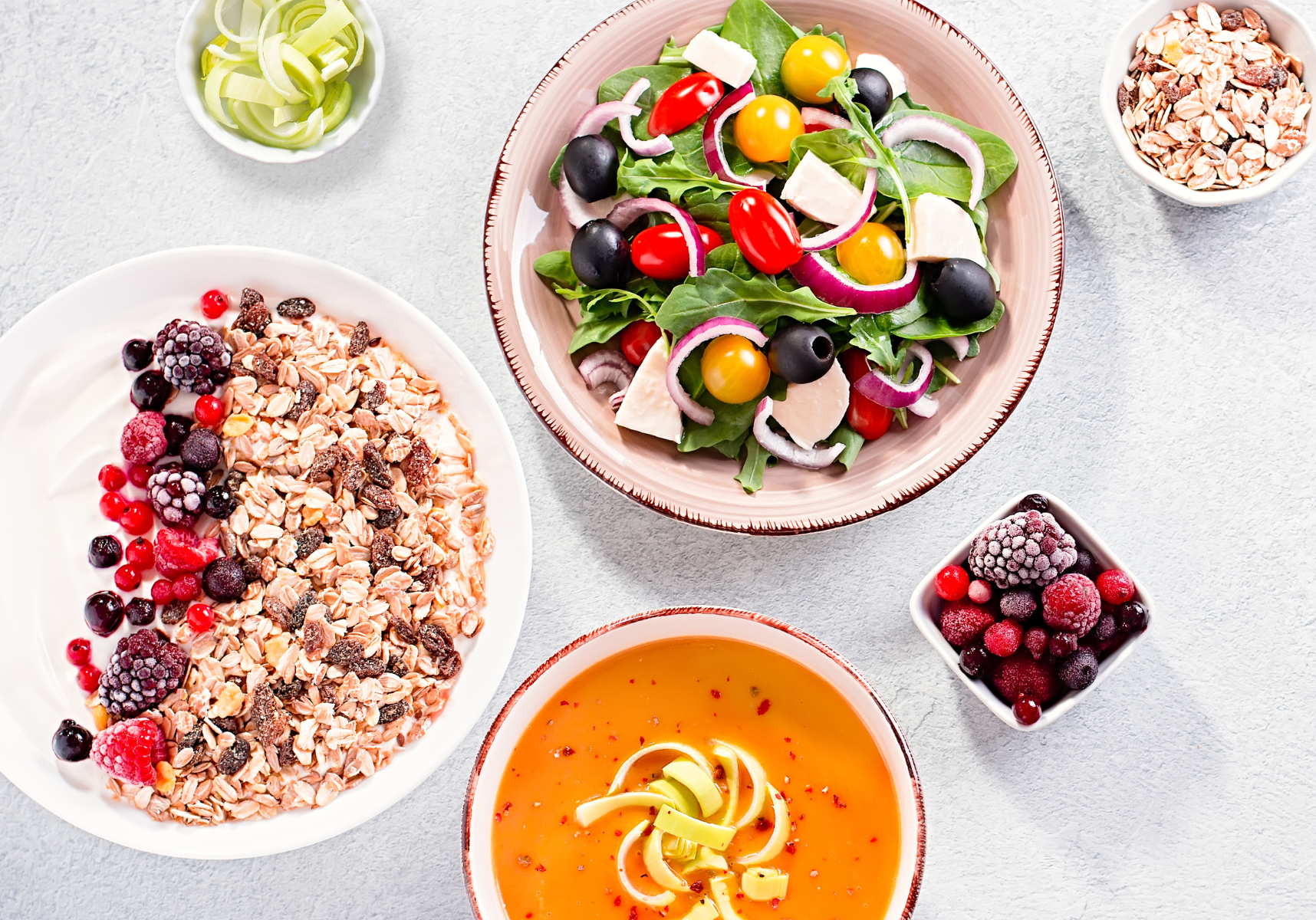
How to Plan Your Meals for a Yogi Lifestyle
A Guide to Mindful Eating and Balanced Meal Planning for Yogis - Beth Rush
Reading time: 3 minutes
Embracing a yogi lifestyle goes beyond the mat — it extends to nourishing your body with mindful eating.
Proper meal planning can help you maintain energy, support your practice and promote well-being. Let’s explore how to create a balanced meal plan that aligns with your yogi journey and supports a happy, healthy life.
How Many Meals a Day Do Yogis Eat?
While there’s no one-size-fits-all approach, many yogis find that eating smaller, more frequent meals throughout the day helps maintain steady energy levels. Typically, this translates to three main meals (breakfast, lunch and dinner|) and two to three small snacks between meals. This eating pattern can help prevent some people from overeating.
However, some yogis opt for intermittent fasting and minimal to no snacking. The most common fasting method is 16-8 and 18-6, where you fast for 16 or 18 hours and eat for eight or six hours. This eating method translates to two meals a day or two meals and a snack.
Listen to your body and adjust as needed. Some yogis eat one large meal daily to enjoy their eating time, while others only eat five to eight small meals or “snacks” throughout the day. The key is to find a rhythm that supports your energy and hormone levels and aligns with your yoga practice. Pay attention to how different meal timings affect your body and mood, and experiment to find what works best for you.
Focus on Whole, Unprocessed Foods
Choosing whole foods over processed options aligns with the yogi principle of Saucha (purity). Whole foods are minimally processed and free from additives or artificial substances. They are packed with nutrients, fiber and natural compounds that support overall health.
Incorporating whole foods into your diet can improve digestion, steady energy levels and better nutrient absorption. These foods are often more satisfying, helping to reduce cravings and promote a healthy weight. Choosing whole foods also supports a more sustainable food system, aligning with the yogi principle of Ahimsa (non-harm).
When planning your meals, aim to include diverse whole foods sources, including:
- Whole grains like quinoa, brown rice and oats
- Legumes such as lentils, chickpeas and beans
- Nuts and seeds for healthy fats and protein
- Organic dairy and eggs if you consume them
Incorporate Fruits and Vegetables
Fruits and vegetables are the cornerstone of a yogi-inspired diet. They are packed with vitamins, minerals, antioxidants and fiber that support your body’s functions and promote well-being.
Aim to include a rainbow of fruits and vegetables in your meals. Each color represents different phytonutrients that offer unique health benefits. For example, dark leafy greens are rich in iron, chlorophyll and calcium, while red and purple fruits and veggies contain beneficial antioxidants.
Try to include raw and cooked vegetables in your diet. Raw veggies offer enzymes that aid digestion, while some nutrients become more bioavailable when cooked. Experiment with different preparation methods like steaming, roasting or lightly sautéing to find what you enjoy most.
Hydrate Mindfully
Proper hydration is critical for your health and yoga practice. Start your day with warm lemon water to aid digestion, and aim for at least eight glasses of water daily. Herbal teas can be a soothing addition to your routine, and coconut water is excellent for post-practice hydration.
Drink water between meals rather than with them to support optimal digestion. This practice allows your digestive juices to work more effectively on your food without being diluted.
Meal Planning for Yogis
Effective meal planning can save time, reduce stress and ensure you’re fueling your body correctly. Set aside time each week to plan your meals and create a grocery list. Prep your ingredients in advance by washing and chopping veggies or cooking grains.
Use a variety of colorful foods for balanced nutrition and consider batch cooking to have healthy meals ready throughout the week.
Mindful Eating Practices
Incorporate mindful eating habits into your routine to enhance digestion and deepen your connection with the nourishment you provide your body. Eat slowly and chew thoroughly, allowing your body to process the food better.
Practice gratitude before meals, acknowledging the nourishment you’re about to receive. Avoid distractions like TV or your phone while eating. Instead, focus on enjoying your food with all your senses.
Listen to your body’s hunger and fullness cues. Eat when you’re hungry, but stop before you feel overly full. Tuning into your body’s signals signs well with the self-awareness cultivated in yoga practice.
Example Yogi Meal Plan
Here’s a sample day of balanced, yogi-friendly meals:
- Breakfast: Warm oatmeal with berries, chia seeds and a drizzle of honey
- Mid-morning snack: Apple slices with almond butter
- Lunch: Quinoa bowl with roasted vegetables, chickpeas and tahini dressing
- Afternoon snack: Carrot sticks with hummus
- Dinner: Lentil soup with a side of steamed greens and brown rice
- Evening snack: Warm golden milk
Adjust food portions and timing based on your individual needs and schedule.
Planning Your Meals Like a Yogi
Embracing a yogi-inspired meal plan nourishes your body, mind and spirit. Mindfully choosing wholesome foods and eating with intention will support your yoga practice and well-being. Start small, listen to your body and enjoy the journey to a more balanced, energised you!







